Affiliate links on Android Authority may earn us a commission. Learn more.
Google Pixel 7 vs Pixel 8: Should you upgrade?


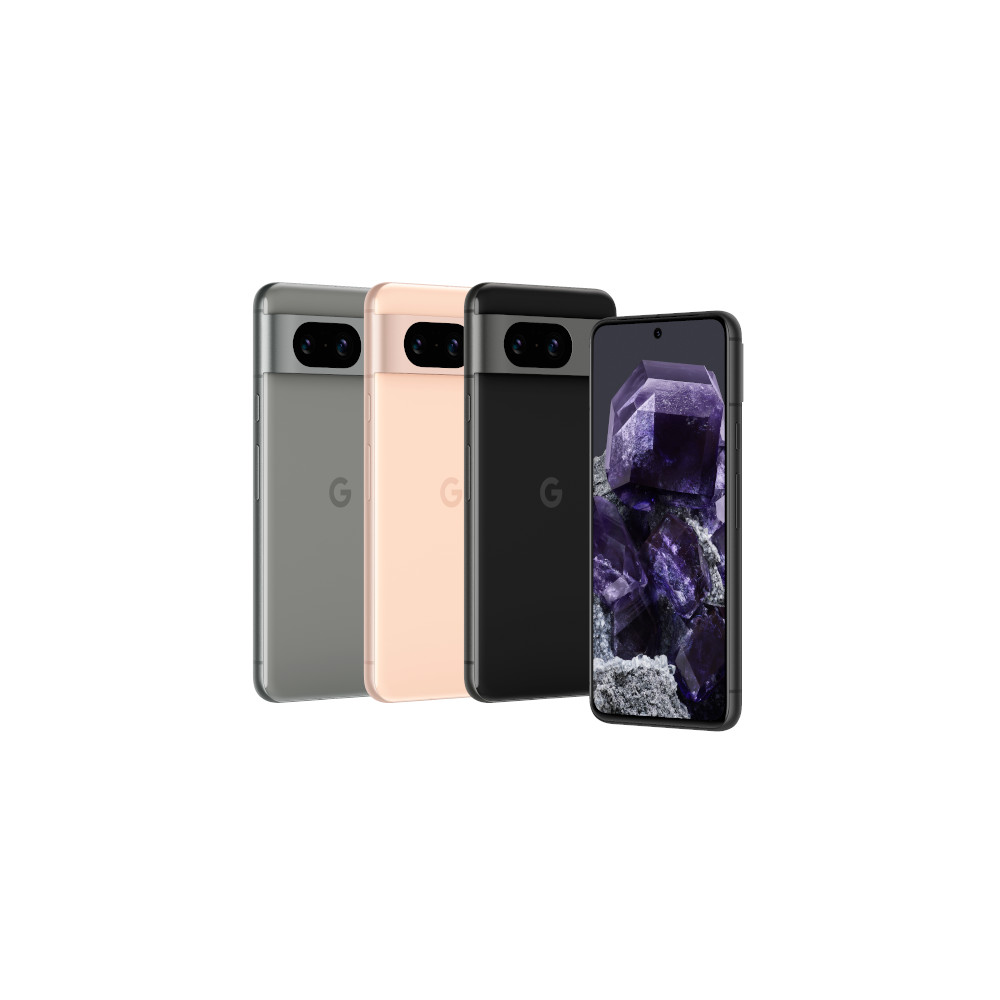

Google launched a radical new design back with the Pixel 6, and it seems to have stuck. Features like the camera bar and Tensor chip have become the Pixel’s calling cards, and Google has had two whole generations to refine its hardware. As such, you might be tempted to upgrade now that the Pixel 8 series has arrived. But what if you have last year’s edition, the Pixel 7? Well, let’s dig into all things Google Pixel 7 vs Pixel 8 to see if it’s worth spending the money.
Google Pixel 7 vs Pixel 8: At a glance
- The Google Pixel 7 is cheaper than the Pixel 8, with the latter picking up a $100 price bump from $599 to $699.
- The Pixel 8 has faster wired charging than the Pixel 7, offering 27W speeds to its predecessor's 21W rate.
- Google's Pixel 7 has a larger display than the Pixel 8, packing a 6.32-inch panel to the new model's 6.2-inch display.
- The Google Pixel 7 and Pixel 8 have almost identical camera setups, with 50MP and 12MP rear sensors, though the Pixel 8 has a slightly wider field of view from its ultrawide sensor.
- Google's Pixel 8 has a newer, more powerful processor, thanks to the upgrade from the Pixel 7's Tensor G2 to the Tensor G3.
- The Pixel 8 has a slightly larger battery than the Pixel 7, bumping from 4,355mAh to 4,575mAh.
- The Pixel 8 will see more software updates than the Pixel 7, carrying a 7-year commitment to the previous model's 5-year promise.
Google Pixel 7 vs Pixel 8: Specs
| Google Pixel 8 | Google Pixel 7 | |
|---|---|---|
Display | Google Pixel 8 6.2-inch OLED 2,400 x 1,080 resolution 428ppi 20:9 aspect ratio 60-120Hz refresh rate 1,400 nits brightness (HDR) 2,000 nits brightness (peak) HDR support Gorilla Glass Victus | Google Pixel 7 6.32-inch OLED 2,400 x 1,080 resolution 1,400 nits 90Hz refresh rate |
Processor | Google Pixel 8 Google Tensor G3 | Google Pixel 7 Google Tensor G2 |
RAM | Google Pixel 8 8GB LPDDR5X | Google Pixel 7 8GB LPDDR5 |
Storage | Google Pixel 8 128 or 256GB UFS 3.1 | Google Pixel 7 128 or 256GB UFS 3.1 |
Power | Google Pixel 8 4,575mAh (typical) 27W wired charging (USB-PD 3.0 PPS) Qi wireless charging | Google Pixel 7 4,355mAh (typical) 21W wired charging (USB-PD 3.0 PPS) |
Cameras | Google Pixel 8 Rear: - 50MP wide (1.2μm pixel width, ƒ/1.68 aperture, 82-degree FoV, 1/1.31-inch sensor, AF, OIS, EIS) - 12MP ultrawide (1.25μm pixel width, ƒ/2.2 aperture, 125.8-degree FoV, AF) - Single-zone laser-detect auto-focus (LDAF) sensor Front: - 10.5MP (1.22μm pixel width, ƒ/2.2 aperture, 95-degree FoV, FF) Camera app does not have pro controls | Google Pixel 7 Rear - 50MP main 1.2 μm, ƒ/1.85, 82-degree FoV 1/1.31-inch sensor OIS and EIS - 12MP ultrawide 1.25 μm, ƒ/2.2, 114-degree FoV - Laser AF Front: - 10.8 MP 1.22 μm, ƒ/2.2, 92.8-degree FoV |
Dimensions and weight | Google Pixel 8 150.5 x 70.8 x 8.9mm 187g | Google Pixel 7 155.64 x 73.16 x 8.7mm 197g |
Video | Google Pixel 8 Rear: 4K (24, 30, or 60fps) 1080p (24, 30, or 60fps) Front: 4K (24, 30, or 60fps) Supports: Macro Focus Video, 10-bit HDR, Cinematic Blur/Pan, Slo-Mo up to 240fps, 4K timelapse, Astrophotography timelapse, OIS, digital zoom up to 7x, HEVC (H.265), AVC (H.264) | Google Pixel 7 Rear: 4K (30 or 60fps) 1080p (30 or 60fps) Front: 4K (30 or 60fps) Supports: 10-bit HDR, Cinematic Blur/Pan, Slo-Mo up to 240fps, 4K timelapse, Astrophotography timelapse, OIS, digital zoom up to 7x, HEVC (H.265), AVC (H.264) |
Audio | Google Pixel 8 Stereo speakers Triple-microphone Spatial audio support | Google Pixel 7 Stereo speakers Triple-microphone |
Ports | Google Pixel 8 USB-C 3.2 Dual-SIM (1x nano SIM and 1x eSIM) | Google Pixel 7 USB-C 3.2 Dual-SIM (1x nano SIM and 1x eSIM) |
Security | Google Pixel 8 Titan M2 security chip Under-display fingerprint sensor Face Unlock (Class 3, highest tier) | Google Pixel 7 Titan M2 security chip Under-display fingerprint sensor Face Unlock |
Durability | Google Pixel 8 Gorilla Glass Victus (front and back) IP68 rating | Google Pixel 7 Gorilla Glass Victus (front and back) IP68 rating |
Software | Google Pixel 8 Android 14 7 years of OS upgrades 7 years of security patches 7 years of feature drops | Google Pixel 7 Android 13 at launch 5 years of Pixel Updates |
Colors | Google Pixel 8 Obsidian (black), Hazel (blue-gray), Rose (pink) | Google Pixel 7 Obsidian (black), Snow (white), Lemongrass (yellow) |
In-box contents | Google Pixel 8 Google Pixel 8 1m USB-C to USB-C cable (USB 2.0 speed) Quick Switch adapter SIM tool Paperwork | Google Pixel 7 Google Pixel 7 1m USB-C to USB-C cable (USB 2.0 speed) Quick Switch adapter SIM tool Paperwork |
On paper, the Google Pixel 7 and Pixel 8 don’t seem too far apart. They’re almost the same size, close in weight, and sport generally the same design. However, once you look closer, you’ll realize the new model picks up a few key upgrades under the hood. For starters, it jumps from the Tensor G2 to the brand-new Tensor G3, swapping a 5nm process for a 4nm one and rearranging its core setup. We’ll have a much deeper dive into all things Tensor G3 soon, but we anticipate a step forward in performance. The RAM and storage have stayed put, starting at 8GB and 128GB, with an optional upgrade to 256GB for the latter.
On top of the upgraded chipset, the Pixel 8 ships with Android 14 onboard instead of the Pixel 7’s Android 13 software. Yes, Android 14 has since rolled out for the older Pixel, but the new model has one thing that its predecessor can’t match: Android’s best software commitment. The Pixel 8 (and the Pixel 8 Pro) are slated for a whopping seven years of Android and security patches, which easily beats both Samsung and older Pixel devices.
The Pixel 8 now sets the gold standard for Android updates with a whopping seven years of support.
Google’s Pixel 8 also comes with some upgrades to its display, which has shrunk from 6.32 inches to an even 6.2 inches. It now packs a smooth 60-120Hz refresh rate and a significant boost to its brightness. The Pixel 8 can push 1,400 nits in high-brightness mode and 2,000 nits at its peak, whereas the Pixel 7 hits 1,000 and 1,400 nits with its 90Hz panel, respectively.
Outside of the upgraded panel, Google hasn’t changed many of its materials for the latest Pixel series. The Pixel 8 still uses a combination of Gorilla Glass Victus on the front and back with a recycled aluminum frame. Like its predecessor, the Pixel 8 packs an IP68 rating against both water and dust and still has a SIM tray for a single nano-SIM. If you want dual-SIM support, the Pixel 7 and Pixel 8 support eSIM for additional profiles.
Google Pixel 7 vs Pixel 8: Size comparison
As you might expect, given the slightly smaller display, the Pixel 7 and Pixel 8 have a few millimeters of difference between them. It’s not a huge change — about 3mm of width and 5mm of height — but the Pixel 8’s rounded corners help to accentuate the new size. It feels smaller out of the box, and the smoother corners melt just a little bit better into the palm of your hand. You might notice the Pixel 8’s weight loss a bit more, having dropped 10 grams from 197 to 187.
There’s not much to dig into regarding sizing, with the smaller display standing as the main difference. However, the Pixel 8 appears to have slightly slimmer, now even bezels around all four sides. This is a nice change from the Pixel 7, which had a slightly thicker chin across the bottom edge. Both phones still have punch hole selfie cameras.
Google Pixel 7 vs Pixel 8: Camera
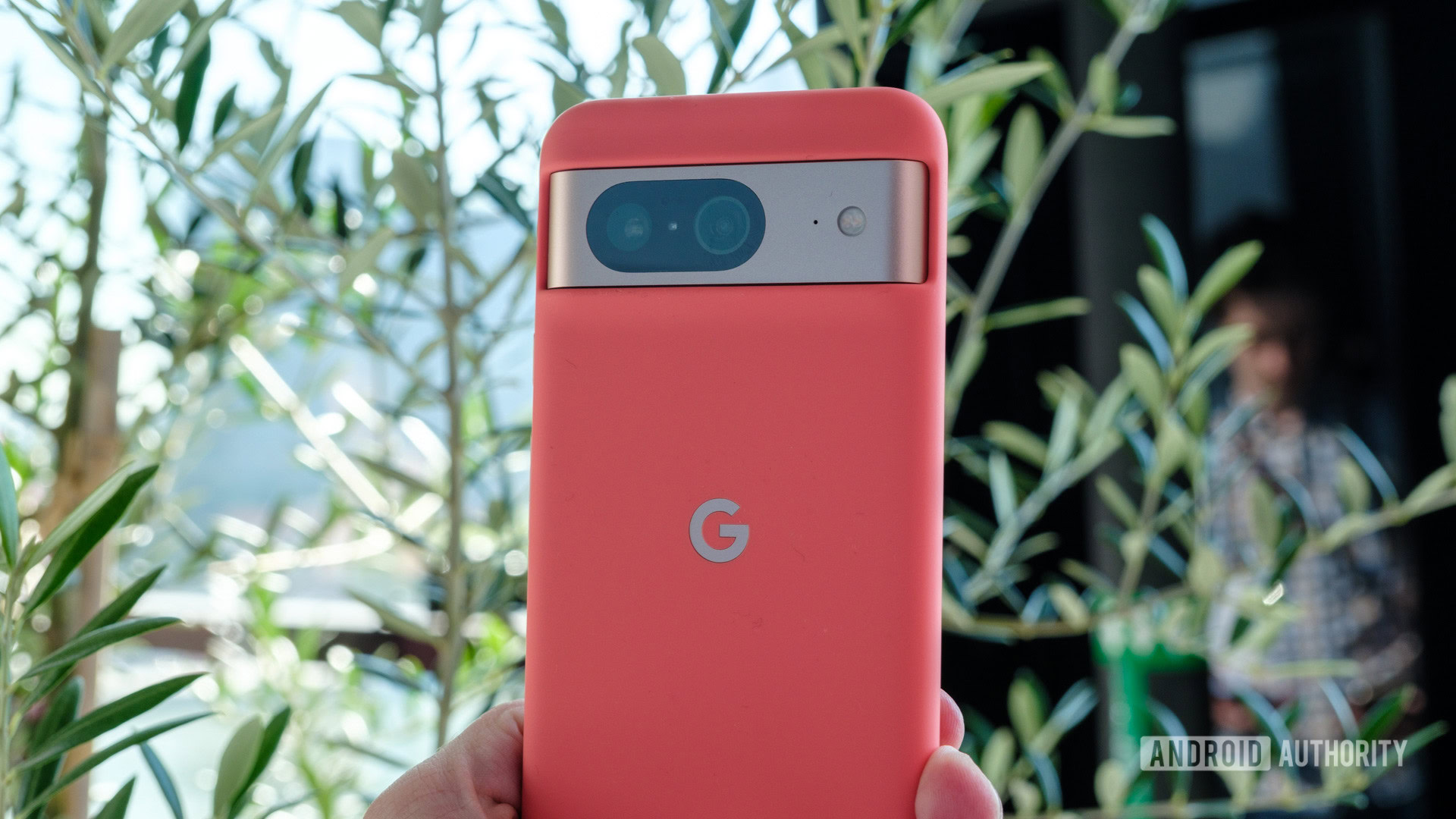
At this point, the camera bar has become nearly as iconic as Google’s Pixel cameras themselves. Well, that’s an exaggeration, but not too much of one. The introduction of the camera bar came with significant camera improvements back on the Pixel 6, and it’s a design that stands apart from all other Androids on the market.
Google didn’t reinvent the wheel for its Pixel 8, though it made some minor tweaks to set the phone apart from its predecessor. You still get a 50MP primary camera and a 12MP ultrawide sensor, but the main lens now has a wider aperture for better low-light performance, and the ultrawide option has a wider field of view, allowing you to fit 126 degrees of the scene into your photos. Google tweaked its selfie camera, scooting from 10.8MP to 10.5 and swapping from a 21mm equivalent to a wider 20mm focal length.
The Pixel 8's camera isn't all-new, but some of its Tensor G3-powered features will change the processing game once again.
We were pretty pleased with the results we saw from the Pixel 7 during our initial review period, and the upgrade to the Tensor G3 should push the Pixel 8 even further. During its keynote, Google announced a few new camera features, including Audio Magic Eraser and Best Take, which rely on clever processing tricks to improve photos and videos. Audio Magic Eraser can pick out and eliminate background noises from your videos, while Best Take lets you swap out faces in a group photo for the perfect result. Of course, we’ll have to wait until we can test the features to determine how well they work. Google also announced Magic Editor, which takes Magic Eraser a step (or two) further, allowing you to edit and generate elements of your image that didn’t exist before.
Unfortunately, the cameras are one area where Google has begun to establish a separate standard for its Pro models. Where the Pixel 8 Pro picked up in-depth options like manual ISO and aperture controls, the Pixel 8 and Pixel 7 are still limited to pressing the shutter button and trusting Google to do the rest. Maybe we’ll see this option trickle to the base model someday, but it seems like one way to differentiate the premium version from the standard Pixel offering.
Google Pixel 7 vs Pixel 8: Battery life and charging
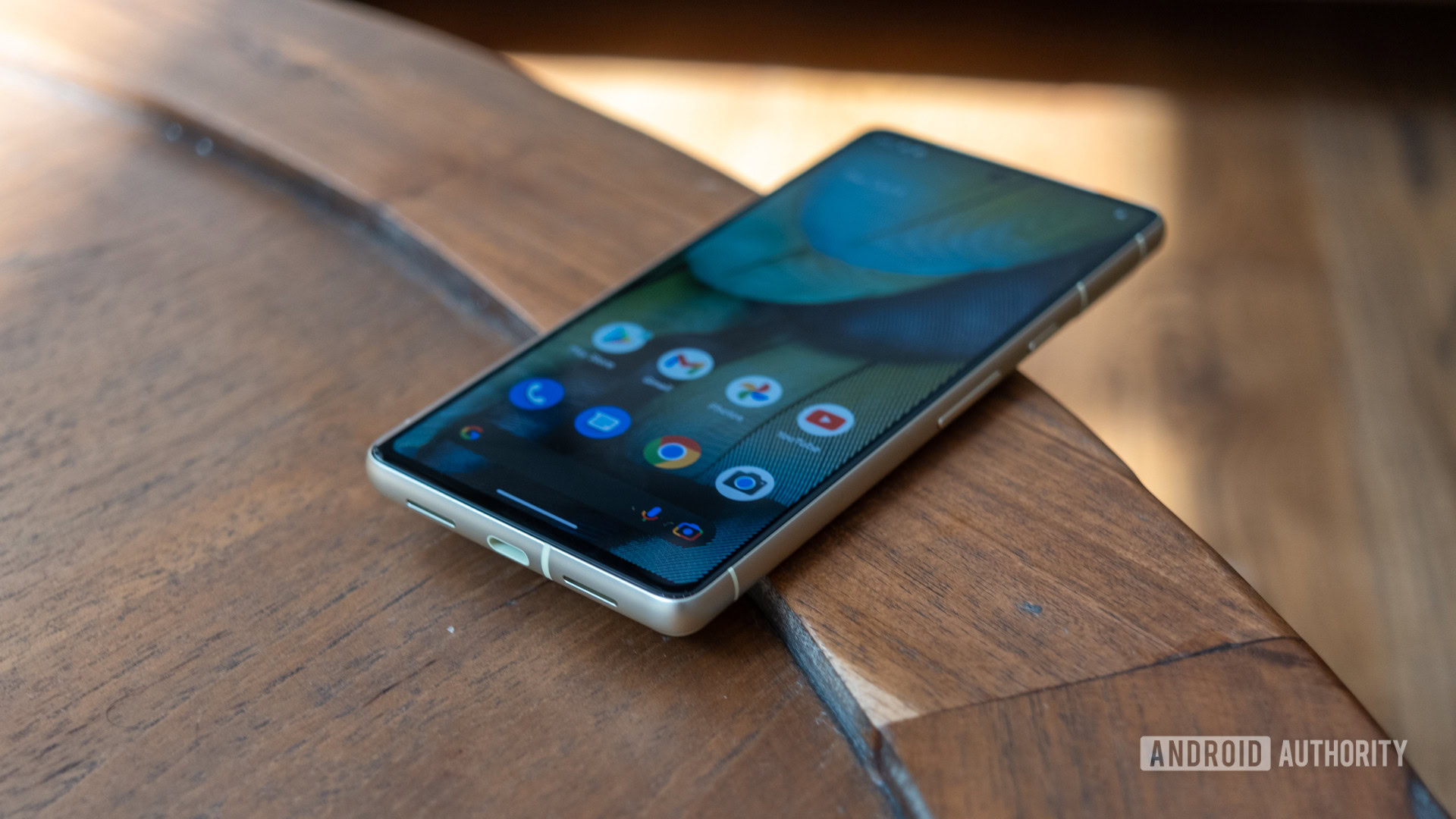
Despite offering a smaller footprint, just about every part of the Pixel 8’s battery and charging setup is bigger and better. Google found a way to expand the battery, jumping from 4,355mAh on the Pixel 7 to 4,575mAh on the Pixel 8. Mix in the updated chipset, and the new model should be able to keep the lights on for longer than its predecessor. As for the wired charging, the Pixel 8 now supports up to 27W speeds compared to the Pixel 7’s 21W rate. Of course, Google recommends using its own 30W charger for the best results, but any USB PD PPS-enabled block should do.
We’ll have to circle back once we’ve had more time to test the charging speed for ourselves — we all remember that the Pixel 7 didn’t quite live up to its advertised rates — but we’ll be sure to include our data in the final review. Either way, you should have no problems pushing your Pixel through a full day of usage and maybe a bit further into the next day before you need a charger.
Google’s in-house Pixel Stand is your best bet if you prefer wireless charging. The Pixel 8 is capable of up to 18W wireless speeds on Google’s pad, while it’s capped at 12W for others.
Google Pixel 7 vs Pixel 8: Price and availability
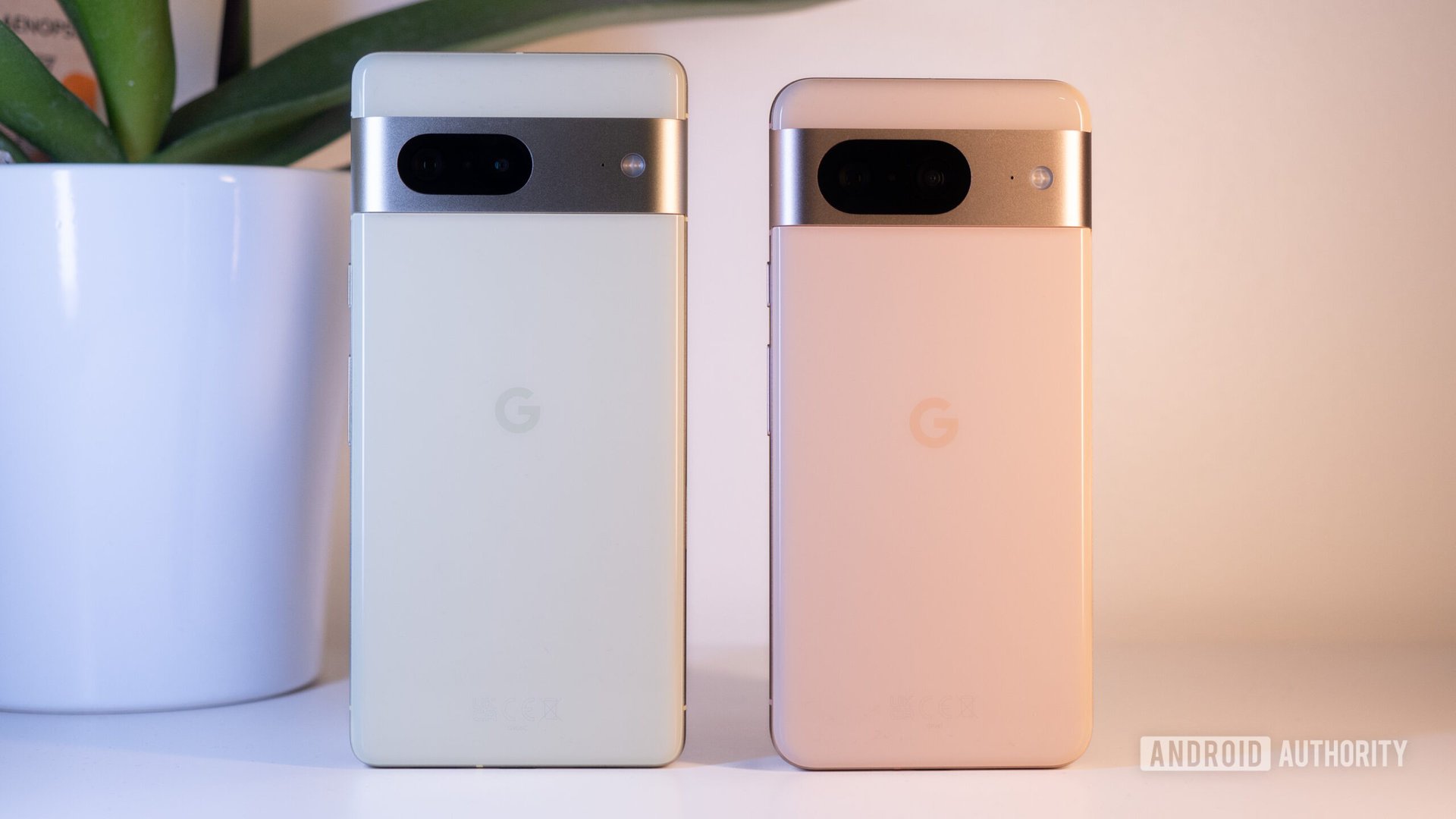
Google Pixel 7: Starts at $599
Google Pixel 8: Starts at $699
The day has finally come. Google has had to give up some of its value proposition to keep the Pixel 8 moving forward. All the upgrades mentioned above have come with a $100 price increase, taking the smaller flagship from a no-brainer $599 to a slightly more competitive $699. While it’s more expensive, the Pixel 8 remains one of the best-value devices on the market, still undercutting rivals like the Samsung Galaxy S23 and iPhone 15 by at least $100. It’s currently available for pre-order, with purchases beginning to ship on October 11. If you’re hoping to save a bit of money through your carrier, the Pixel 8, like the Pixel 7, is available from major options like Verizon, AT&T, and T-Mobile.
Google is also taking a slightly different approach to its color options with the Pixel 8. Where the Pixel 7 came in Snow, Obsidian, and Lemongrass (which was a light yellow), the Pixel 8 ditches a classic white option altogether. It’s still available in Obsidian, but the Pixel 8 now sports the Hazel finish we saw on the Pixel 7 Pro and a Rose color that harkens back to the heights of the Rose Gold craze.
Google Pixel 7 vs Pixel 8: Should you upgrade?
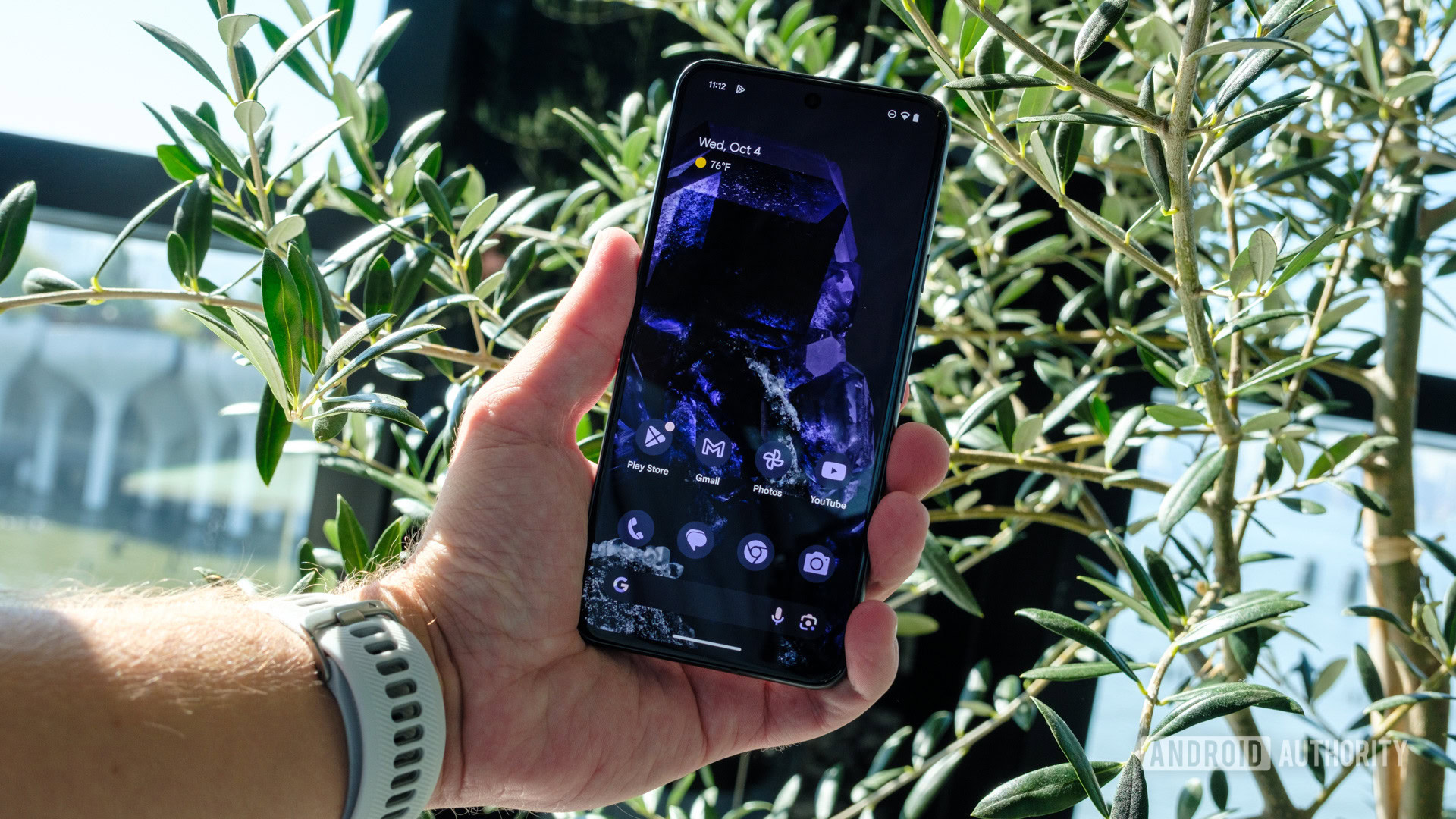
Ultimately, while the Pixel 7 and Pixel 8 are alike in many ways, the new phone has enough upgrades to swing us in its favor. Yes, it’s $100 more expensive, but it comes with the more performant Tensor G3 chipset under the hood and a whopping seven years of updates to match. That means you might be spreading out the cost of your device much longer — provided you aren’t tempted to upgrade again next year. The Pixel 8 has similar cameras to the previous Pixel 7, though, once again, the Tensor G3 is the x-factor for additions like Best Take and Audio Magic Eraser. Other improvements like a larger battery, faster wired charging, and a brighter display help to swing the pendulum even further in the Pixel 8’s favor.
That’s our take on the Google Pixel 7 vs Pixel 8, but what do you think? Would you rather buy the Pixel 8 or stick with the trusty Pixel 7? Let us know in the poll below, and then check out the best prices.
Should you buy the Pixel 8 or stick with the Pixel 7?

Google Pixel 7 vs Pixel 8: FAQ
While they’re not technically waterproof, both the Pixel 7 and Pixel 8 come with IP68 ratings for water and dust resistance up to a certain point.
Yes, both phones support wireless charging.
No, neither the Pixel 7 nor the Pixel 8 comes with a microSD slot, so you’ll have to choose between 128 and 256GB of fixed storage.
Yes, both the Pixel 7 and Pixel 8 support dual-SIM via a single nano-SIM and downloadable eSIM.